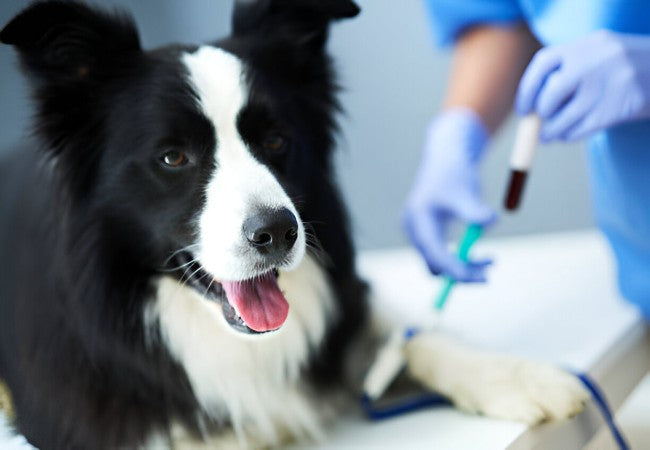Veterinary Guide to Drug‑Induced Nephrotoxicity in Dogs 2025 🐶🩺

In this article
Veterinary Guide to Drug‑Induced Nephrotoxicity in Dogs 2025 🩺🐶
By Dr. Duncan Houston BVSc
🧬 What Is Drug‑Induced Nephrotoxicity?
Drug‑induced nephrotoxicity occurs when medications interfere with kidney function, either by reducing blood flow (renal perfusion) or directly damaging kidney tubules. If unchecked, it can lead to acute tubular necrosis and renal failure. This condition is often reversible if identified and managed early. Risk factors include dehydration, advanced age, fever, and pre‑existing kidney disease.
⚠️ At‑Risk Patients
- Senior or dehydrated dogs: Less renal reserve increases vulnerability.
- Concurrent illness: Fever or infection reduces renal perfusion, compounding drug effects.
- Polypharmacy: Multiple drugs (NSAIDs + ACE inhibitors + diuretics = “triple whammy”) significantly ramp up risk.
- Pre‑existing CKD or AKI: Baseline compromised function lowers compensation ability.
💊 Common Nephrotoxic Medications
- NSAIDs (e.g., carprofen, meloxicam): reduce prostaglandins → decrease blood flow → can cause papillary necrosis, interstitial nephritis, acute tubular necrosis.
- Aminoglycoside antibiotics (e.g., gentamicin): direct proximal tubular toxicity.
- Amphotericin B: common cause of AKI during antifungal use (incidence 36–42%).
- Cisplatin & contrast agents: cause tubular injury or vasoconstriction.
- ACE inhibitors & diuretics: in combination with NSAIDs, may dangerously reduce GFR.
- Ciclosporin, lithium, sulfonamides, radiocontrast: linked to direct tubular or interstitial damage.
- Certain antibiotics (vancomycin, rifampin): can cause interstitial nephritis.
⚠️ Early Clinical Signs
- Lethargy, poor appetite, nausea, vomiting, diarrhea.
- Dehydration—dry gums, skin tenting due to fluid imbalance.
- Increased thirst or urination (polyuria/polydipsia) in sub‑acute damage.
- Renal pain or abdominal discomfort, sometimes hematuria.
- Oral ulcers, halitosis—signs suggestive of uremia.
🔍 Diagnostic Work‑Up
- History & physical: note recent drug exposure, hydration, symptoms.
- Bloodwork: CBC and chemistry to detect elevated creatinine, BUN, phosphorus, and electrolyte imbalances.
- Urinalysis: USG, protein, sediment, casts; look for kidney injury markers.
- Novel biomarkers: TIMP‑2, KIM‑1 may detect injury before creatinine rises.
- Imaging: ultrasound/X‑ray assess renal size, perfusion, obstructions; advanced MRI for renal blood flow (research stage).
- Biopsy: reserved for uncertain cases or interstitial disease confirmation.
🛠️ Treatment & Management
🚰 Immediate Intervention
- Discontinue nephrotoxic drugs immediately.
- Hospitalized with IV fluids to rehydrate, improve perfusion, and support GFR.
- Diuretics if oliguric (e.g., furosemide), with fluid monitoring.
- Treat underlying conditions—antibiotics for infection, antipyretics for fever.
📏 Ongoing Care
- Monitor renal markers, electrolytes, and hydration daily.
- Adjust dosage for any ongoing medications using renal protocols.
- Pain control using renal-safe alternatives (e.g., opioids over NSAIDs).
- Consider renal replacement (dialysis) for refractory cases.
🏥 Advanced Supportive Options
- Dialysis in referral centers—life‑saving in select AKI cases.
- Potential future: fMRI for early perfusion deficits.
📈 Prognosis
- Reversible if caught early and managed, tubular cells regenerate.
- Without intervention, it progresses to CKD or fatal AKI.
- Dialysis improves survival but requires complex care.
- Long‑term: monitor for CKD and adjust care accordingly.
🏡 Prevention & Best Practices
- Avoid NSAIDs or use the minimal effective dose in older/dehydrated dogs.
- Ensure adequate hydration, especially during fever or diuretic use.
- Follow drug dosing guidelines for renal disease.
- Use biomarkers in high-risk patients to detect early injury.
- Be cautious combining NSAIDs + ACE + diuretic (triple whammy).
- Pre‑hydrate before nephrotoxic contrast imaging.
📱 Ask A Vet Telehealth Support
- 📸 Upload urinalysis images, daily hydration logs for reassessment.
- 🔔 Get reminders for bloodwork, biomarker testing, medication changes.
- 🩺 Video consults to review symptoms, fluid status, and hydration techniques.
🎓 Case Spotlight: “Bella” the Spaniel
Bella, a 12‑year‑old Spaniel on long‑term carprofen for arthritis, developed lethargy and vomiting. Labs showed rising creatinine/ BUN. NSAIDs were halted. She received 48 hr IV fluids, opioid analgesia, and biomarker monitoring. Over 5 days, kidney values normalized; carprofen was replaced with gabapentin for pain. Ask A Vet monitored hydration, provided home fluid packs, and scheduled urine/protein check. Bella regained her quality of life safely. 🐕⚕️
🔚 Key Takeaways
- Drug‑induced nephrotoxicity is a preventable, often reversible cause of kidney injury in dogs.
- Common culprits include NSAIDs, aminoglycosides, amphotericin, cisplatin, contrast agents, ACE inhibitors + diuretics.
- Early signs—appetite change, vomiting, hydration shifts—require vigilance.
- Diagnostics should include bloodwork, urinalysis, biomarkers, and imaging.
- Treatment = stop implicated drugs + IV fluids; dialysis may be needed.
- Prevention with cautious drug use, hydration, and regular monitoring, especially in at‑risk dogs.
- Ask A Vet telehealth enhances early detection, guided fluid therapy, medication adjustment, and remote support 📲🐾
Dr Duncan Houston BVSc, founder of Ask A Vet. Download the Ask A Vet app to help protect your dog from drug‑related kidney issues—from proactive monitoring and early detection to guided treatment, safe pain relief, hydration support, and ongoing telehealth care 🐶📲






